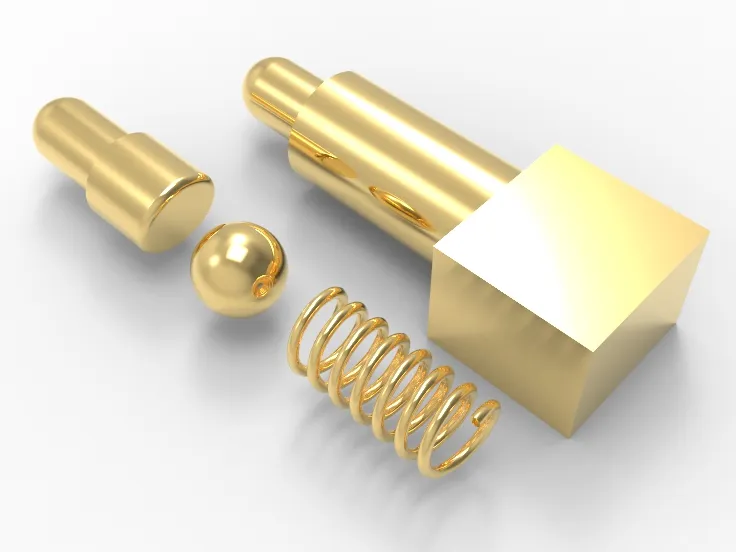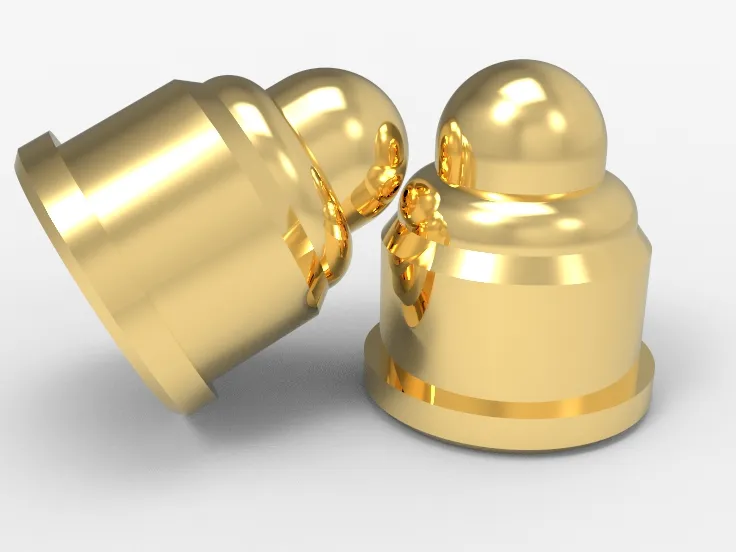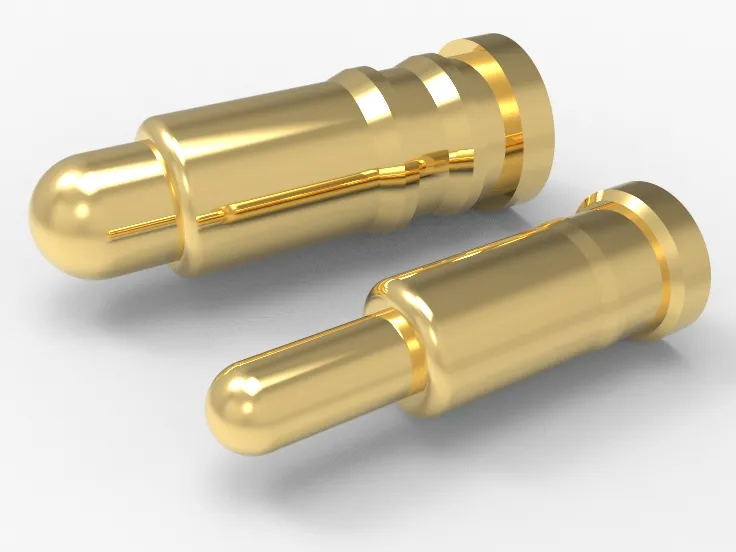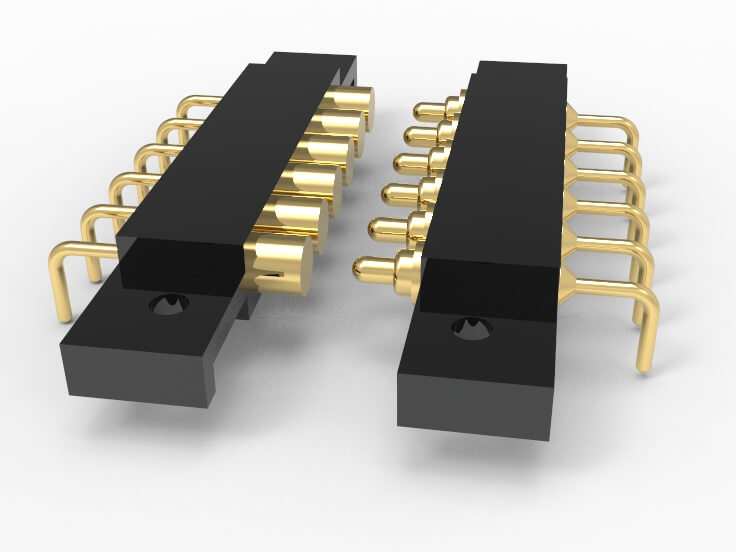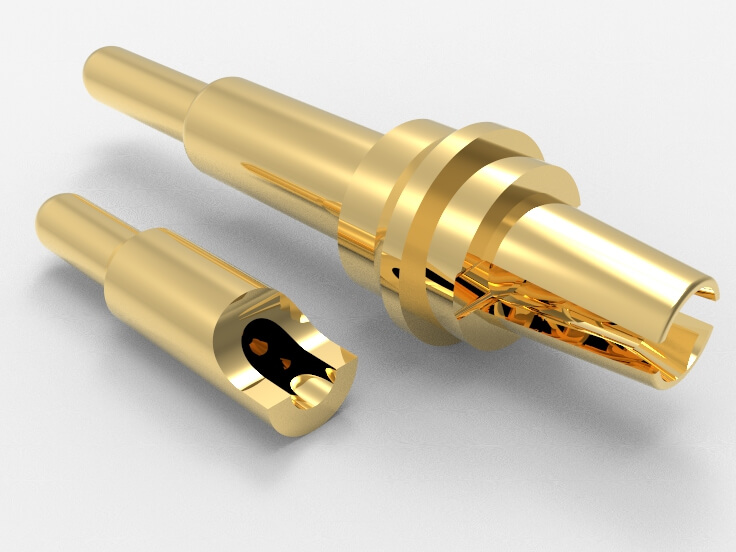What Is Quality Inspection? Uncover the Thorough Quality Inspections Essential for Achieving Exceptional Pogo Pin Standards and Performance
1. Introduction: The Importance of Quality Inspection
What is Quality Inspection?
Quality inspection is a critical step to ensure Pogo Pins meet set standards throughout design, manufacturing, and delivery. For high-precision Pogo Pins, it’s more than just finding defects. It involves verifying each Pogo Pin against strict technical specifications to ensure top performance and long-term reliability.
In modern manufacturing, quality inspection is crucial. It’s not just a tool for staying competitive but a foundation for project success. Tight quality control cuts down on mistakes, saves money, keeps customers happy, and gives you an edge in a competitive market. For Pogo Pins, thorough quality inspection ensures every detail is verified, providing the best functionality and durability.
2. What is Quality Inspection? Types of Quality Inspection
2.1 Pre-Production Raw Material Inspection:
The quality of the raw materials has a big impact on how well the final product performs and how dependable it is. Here are the key types of raw material inspections:
- Material Composition Analysis: Chemical analysis ensures metals like brass or stainless steel meet purity standards, enhancing conductivity and corrosion resistance.
- Hardness Testing: Tests like Rockwell hardness check if the material’s hardness is within the specified range, avoiding deformation or affecting elasticity and conductivity.
- Plating Thickness Measurement: Check the uniformity and thickness of plating to prevent oxidation and ensure stability and wear resistance.
- Surface Smoothness Check: Microscopic inspection ensures the material surface is free of irregularities or scratches, crucial for conductivity and wear resistance.
- Dimensional Accuracy Check: Precision measurements ensure material dimensions are within design tolerances, avoiding assembly issues.
- Tensile Strength Testing: Tests material’s ability to withstand mechanical stress during processing and use without breaking.
- Chemical Stability Testing: Ensures materials don’t undergo chemical changes over time, especially in high-temperature and high-humidity environments.
- Environmental Adaptability Testing: Simulates extreme conditions to ensure materials maintain performance and extend the Pogo Pin’s lifespan.
Thorough quality inspection not only ensures raw material quality but also lays the groundwork for Pogo Pin’s exceptional performance. Through these professional processes, you can enhance product stability and reliability, supporting project success.
2.2 In-Process Online Inspection:
- Visual Inspection: Checks for surface defects, shape deviations, and coating quality using high-resolution cameras and automated imaging to spot tiny issues like scratches or uneven coatings.
- Dimension Measurement: Uses lasers or optical tools to measure key dimensions in real-time, such as pin diameter, body length, and spring height, ensuring accurate mechanical and electrical performance.
- Contact Force Testing: Measures the force of Pogo Pin contacts during loading with sensors to ensure consistent and reliable contact force, preventing electrical failures.
- Electrical Performance Testing: Tests electrical parameters like resistance, capacitance, and conductivity to ensure stable operation using automated test equipment (ATE) and high-speed scanners.
- Spring Performance Testing: Monitors the spring’s fatigue strength and rebound using dynamic load tests to ensure elasticity and durability.
- Automated Process Control: Real-time monitoring of temperature, pressure, and speed helps adjust the process to keep the product consistently high-quality.
- Real-Time Data Analysis: Uploads inspection data to a central system for analysis, detecting anomalies and helping engineers quickly address issues.
These online inspection techniques enhance product consistency and reliability, improving quality and success rates in demanding applications.
2.3 Final Inspection of Pogo Pins:
- Visual Check: Inspect the appearance of Pogo Pins after assembly. Look for coating issues, scratches, deformation, or discoloration. This early check helps spot any obvious defects and ensures the product meets visual quality standards.
- Dimensional Measurement: Measure key dimensions (length, diameter, tolerances) using precise tools like micrometers or projectors to ensure they match design specifications. Accurate measurements are crucial for reliable connections.
- Contact Resistance Test: Measure the resistance of Pogo Pins with a contact resistance meter under standard test current. This test ensures stable and reliable current transmission. High resistance can lead to signal instability.
- Spring Fatigue Test: Test the spring in Pogo Pins by compressing and releasing it thousands of times to check its durability and stability. This ensures the product maintains good contact force over time.
- Salt Fog Test: Expose Pogo Pins to a salt fog environment to simulate long-term use in humid, corrosive conditions. This assesses the corrosion resistance of the coating and ensures reliable performance under harsh conditions.
- High-Temperature Aging Test: Expose the product to high temperatures for a set period to check if performance degrades with temperature changes. This ensures stability and extends product life under extreme conditions.
- Life Test: Simulate real-world usage to assess how Pogo Pins perform over their expected lifespan. This reveals any potential long-term reliability issues and ensures consistent performance throughout the product’s life.
- Mechanical Performance Test: Test pull-out force, lateral force, and impact to ensure Pogo Pins don’t break or get damaged under physical stress. This keeps the machine running smoothly across different use.
These thorough quality checks ensure that each Pogo Pin performs to or beyond standards, providing excellent support for your projects and contributing to their success.
3. What is Quality Inspection? Quality Inspection Steps for Pogo Pins
- Raw Material Check: First, we inspect the raw materials to make sure they meet our standards. We use an X-ray fluorescence analyzer to check the metal composition for purity and consistency, preventing quality issues from material defects.
- Visual Inspection: Next, we use a high-precision microscope to look for any tiny defects, like scratches, bubbles, or uneven coating. This ensures the Pogo Pins not only look great but also mesh smoothly with other elements.
- Size Check: We measure the key dimensions of the Pogo Pins with a coordinate measuring machine to ensure they match the design specs. Small deviations can affect the pin’s performance, so size is tightly controlled.
- Electrical Performance Testing: We test the contact resistance with a precise meter to ensure stable electrical performance. We also do a voltage test to confirm the pins can handle the specified voltage without breaking down.
- Environmental Testing: To ensure the Pogo Pins work in different conditions, we run tests for extreme temperatures, salt spray, and humidity. By simulating actual conditions, these tests check that the product is durable and works consistently.
- Durability Testing: We use an automated machine to test the Pogo Pins through thousands of insertions and removals to check their lifespan. This helps us evaluate their mechanical and electrical performance over time.
- Coating Thickness Check: We measure the coating thickness with an X-ray gauge to ensure it’s even and meets design requirements. Coating thickness affects wear resistance and conductivity, making this a critical step.
- Final Inspection: After all individual tests are complete, we do a thorough check of the assembled Pogo Pins. This includes inspecting appearance, size, electrical performance, and environmental resilience to ensure each pin meets the highest quality standards.
These steps ensure that our Pogo Pins meet top-quality standards and perform excellently in all applications.
4. What is Quality Inspection? Quality Inspection in Pogo Pin Manufacturing
4.1 Key Quality Parameters for Pogo Pins:
- Contact Resistance: This measures the efficiency of signal transmission and power consumption. Quality checks use precise instruments to ensure contact resistance meets design standards.
- Spring Force: The spring force must be within a specific range to ensure reliable contact without damaging devices. Mechanical testing verifies its stability throughout the pin’s lifespan.
- Coating Thickness: Gold or nickel coatings enhance conductivity and corrosion resistance. Non-destructive techniques, like X-ray fluorescence, measure coating thickness to ensure it meets industry standards.
- Wear Resistance: Pogo Pins are frequently plugged and unplugged, so wear resistance affects their lifespan. Simulated insertion and removal tests ensure performance remains stable even with frequent use.
- Concentricity: Concentricity affects contact consistency with devices. High-precision optical measurement ensures concentricity to prevent contact issues or device damage.
- Environmental Adaptability: Pogo Pins frequently work in tough environments, like intense heat or high humidity. Environmental tests, like salt spray and thermal aging, ensure functionality under harsh conditions.
4.2 Quality Inspection Techniques for Pogo Pins:
- Contact Force Testing: Ensures reliable and stable contact by measuring each pin’s force in operation with high-precision sensors.
- Wear Resistance Testing: Simulates repeated use to check coating integrity and prevent contact issues from coating wear.
- Environmental Testing: Assesses performance in extreme temperatures, humidity, and corrosive environments to ensure consistent functionality.
- Electrical Performance Testing: Evaluates conductivity and resistance using precision measurement tools to ensure stable electrical connections.
- Appearance Inspection: Checks for straightness, coating uniformity, and defects like scratches or burrs to enhance the pin’s lifespan.
- Dimensional Accuracy Testing: Measures diameter, length, and spacing with high-precision equipment to ensure compliance with design and installation standards.
Through rigorous quality checks, Pogo Pins are manufactured to meet high standards, ensuring outstanding performance in final applications and contributing to project success.
4.3 Common Quality Issues and Solutions:
4.3.1 Coating Peeling Off
- Issue: The coating on the Pogo Pin might peel off during manufacturing or use, affecting performance.
- Solution: Use scanning electron microscopy (SEM) to check coating thickness and uniformity during quality inspection. Also, use X-ray fluorescence (XRF) to ensure coating materials meet standards.
4.3.2 Spring Performance Issues
- Issue: The spring in the Pogo Pin may degrade or lose performance over time, affecting contact force.
- Solution: Perform fatigue testing to simulate real-world conditions and assess the spring’s durability and recovery ability.
4.3.3 Size Tolerance Problems
- Issue: Size tolerances of the Pogo Pin affect compatibility and performance stability in assembly.
- Solution: Use a coordinate measuring machine (CMM) to measure key dimensions precisely and ensure they meet tolerance requirements. Also, use laser measurement for consistency checks.
4.3.4 High Contact Resistance
- Issue: Excessive contact resistance can reduce the Pogo Pin’s conductivity and impact device performance.
- Solution: Measure contact resistance with a precision resistor meter and ensure it is below the specified threshold. Improve material formulas and coating processes to optimize contact resistance.
4.3.5 Poor Soldering Reliability
- Issue: Soldering issues, like poor or cold solder joints, can cause unstable electrical connections.
- Solution: Use infrared thermal imaging to monitor soldering temperatures and adjust parameters as needed. Conduct pull tests to assess the mechanical strength of solder joints.
4.3.6 Poor Corrosion Resistance
- Issue: The Pogo Pin might corrode in harsh environments, affecting performance and lifespan.
- Solution: Use a salt spray test chamber to simulate harsh conditions and test the Pogo Pin’s corrosion resistance to ensure it remains stable.
5. Total Quality Management and Continuous Improvement for Pogo Pins
Total Quality Management (TQM) is a systematic approach aimed at improving product quality through everyone’s involvement and ongoing enhancements. For Pogo Pins, TQM is crucial as their stability directly impacts the quality of electronic devices. Implementing TQM helps ensure high-quality standards throughout the production process, reducing defects and extending product life.
- Everyone’s Involvement: TQM involves everyone from managers to front-line workers. Training and communication help employees understand the importance of quality, enabling them to identify and solve issues in production. For Pogo Pins, operators can monitor production metrics in real-time, correct deviations, and ensure each Pogo Pin meets standards.
- Continuous Improvement: TQM requires ongoing analysis of production data and improvement through the PDCA cycle (Plan, Do, Check, Act). The production of Pogo Pins involves complex processes like plating and precision machining. TQM helps analyze potential issues in each step, optimize processes, reduce variations, and enhance product consistency.
- Data-Driven Decisions: TQM relies on data for quality improvements. In Pogo Pin production, precise data monitoring can identify minor issues such as insufficient contact force or uneven plating. Analyzing this data allows companies to adjust production parameters and ensure each batch meets or exceeds standards.
- Supply Chain Management: TQM also focuses on managing the supply chain. For Pogo Pins, the quality of raw materials is critical. TQM methods involve strict supplier evaluations to ensure materials meet high standards, ensuring the overall quality of Pogo Pins from the start.
- Customer Feedback: TQM values customer input to guide product improvements. As key components in electronic devices, Pogo Pins affect user experience. Collecting and analyzing customer feedback helps improve Pogo Pin design and production to meet changing needs.
By applying TQM, the quality of Pogo Pin production is significantly improved, ensuring product stability and increasing customer satisfaction.
6. Impact of Quality Inspection on Pogo Pins for Client Project Success
In high-precision electronics, inspecting the quality of Pogo Pins is crucial. As key components in electronic devices, their precision and reliability directly affect project success. Rigorous inspection ensures each Pogo Pin meets design standards, preventing delays or failures due to connector issues.
- Accurate Inspection Enhances Project Stability Early in the project, precise measurements and performance checks of Pogo Pins help identify and correct production issues. This ensures that each Pogo Pin meets size, elasticity, and contact resistance standards, leading to stable devices and reduced time and cost for future adjustments and maintenance.
- Improves Long-Term Reliability Pogo Pins must maintain consistent performance over time. This is verified through accelerated aging and durability tests. High-quality inspections identify potential problems, ensuring that Pogo Pins don’t wear out or corrode, thus boosting the project’s long-term success rate.
- Reduces Risk and Builds Customer Trust Comprehensive quality checks are key to minimizing project risks. By thoroughly inspecting Pogo Pins, potential failures are minimized, preventing unforeseen delays or rework due to connector issues. This increases customer trust in product quality, strengthening relationships and market reputation.
- Supports Global Compliance Different markets have strict quality standards for electronic components. Thorough quality inspections ensure Pogo Pins meet or exceed these international standards, facilitating global project deployment. Compliance enhances market competitiveness and reduces certification and testing time and costs for clients entering new markets.
- Quality Inspection as a Core Value for Clients The quality of Pogo Pins directly impacts product performance and market response. Effective inspection processes are not just a production step but a crucial way to create value for clients. Strict quality control ensures clients receive reliable connectors from the start, improving market performance and project success.
7. What is Quality Inspection? Summary and Recommendations
7.1 Summary:
- Quality inspection is crucial to ensuring Pogo Pins meet expected standards and performance requirements. For Pogo Pin connectors, quality inspection is not just about checking if they meet design specifications but also evaluating their performance in real-world applications. Through thorough quality inspection, we can identify and resolve potential issues, ensuring each batch of Pogo Pins delivers excellent performance and consistency.
- Common inspection methods include visual checks, size measurements, electrical performance tests, durability tests, and environmental adaptability tests. These checks ensure Pogo Pins perform well under various conditions, preventing project failures due to quality issues.
7.2 Recommendations:
- Develop a Comprehensive Inspection Plan: Create detailed quality inspection standards and procedures for every stage of Pogo Pin production to ensure each batch undergoes rigorous testing.
- Strengthen Supply Chain Management: Work with suppliers to ensure raw materials and components meet quality standards, avoiding upstream issues affecting final Pogo Pin quality.
- Regularly Train Inspectors: Keep quality inspectors up-to-date with the latest industry knowledge and skills to identify potential issues and take appropriate action.
- Use Advanced Testing Equipment and Techniques: Deploy automated test equipment to make processes faster and more accurate, cutting down on human blunders.
- Establish a Quality Feedback Mechanism: Use customer feedback and actual usage data to continuously improve inspection processes, ensuring Pogo Pins maintain high performance standards.
8. Appendix: Tools and Techniques for Quality Inspection
8.1 Common Inspection Tools:
- High-Definition Microscope: Used to spot surface defects like cracks, scratches, or uneven plating on Pogo Pins. It magnifies the pin to help engineers quickly find tiny flaws, ensuring each pin meets high quality standards.
- Multimeter: Essential for checking the electrical performance of Pogo Pins, especially for measuring resistance and conductivity. Engineers use it to ensure the pin’s electrical stability and reliability.
- Contact Resistance Tester: Measures the contact resistance of Pogo Pins under various pressures. This tool ensures stable electrical connections and evaluates the pin’s lifespan and durability.
- Force Gauge: Measures the insertion and removal force of Pogo Pins, checking for adequate connection strength without risking damage from excessive force.
- Measurement Projector: Provides precise measurements of Pogo Pin dimensions to ensure they meet design specs. It uses optical projection and precise measurement techniques to verify consistency in production.
- X-Ray Microscope: Inspects the internal structure of Pogo Pins, focusing on solder joint integrity and solder fill. It’s crucial for detecting internal defects or poor soldering.
- Automated Test Equipment (ATE): Used for quality control in large-scale production. It performs comprehensive electrical and mechanical tests, including resistance, conductivity, and insertion force, ensuring the pins meet strict quality standards.
- Surface Roughness Tester: Measures the smoothness and roughness of the Pogo Pin surface. This tool ensures the pin has excellent contact performance and wear resistance.
8.2 Emerging Inspection Technologies:
Pogo Pins are connectors widely used in electronics, and their quality affects product reliability and performance. Recent advancements in inspection technology have significantly improved Pogo Pin quality checks. Here are some new techniques:
- High-Resolution 3D Microscopy: Detects tiny surface defects, wear, and microcracks with precision and provides 3D images for better understanding of the Pogo Pin’s condition.
- X-Ray CT Scanning: Non-destructive method to find internal defects like voids, cracks, and material inconsistencies, providing detailed data for quality control.
- Laser Interferometry: Measures Pogo Pin shape and size with micrometer accuracy to ensure manufacturing precision meets design specifications.
- Resistance Measurement: Evaluates electrical conductivity and contact quality to ensure stable performance in actual use.
- Ultrasonic Testing: Uses sound waves to detect internal flaws like cracks and delaminations, ensuring structural integrity.
- Infrared Thermography: Monitors heat distribution during operation to identify hotspots and prevent overheating issues.
- Hardness and Elasticity Testing: Assesses material strength and flexibility to predict reliability and lifespan under use.
- Chemical Composition Analysis: Ensures materials meet standards and provide good electrical and mechanical performance through techniques like spectroscopy and mass spectrometry.
These technologies improve accuracy and efficiency in inspecting Pogo Pins, providing comprehensive data to ensure reliable performance in demanding environments.






